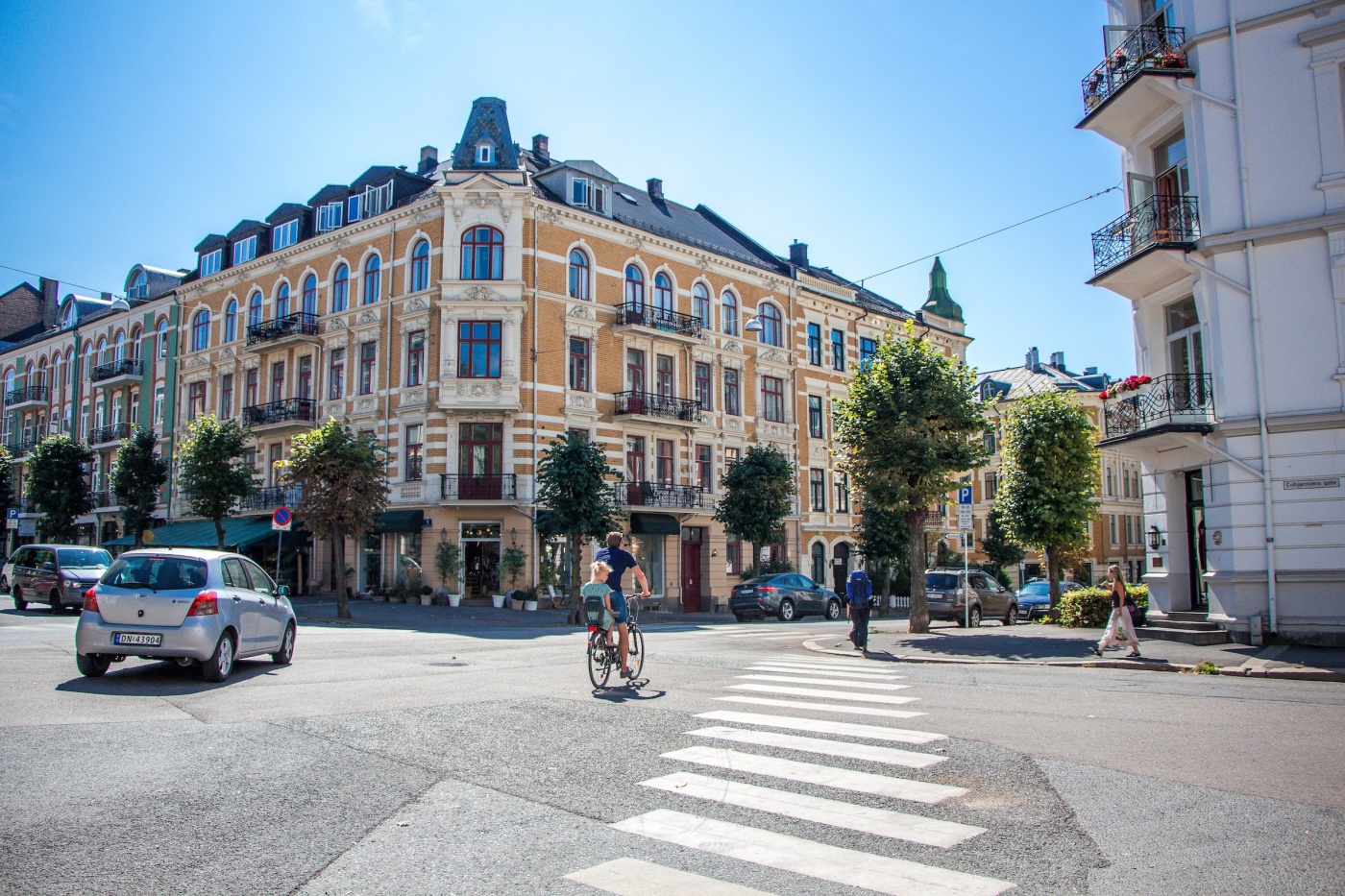This website uses cookies so that we can provide you with the best user experience possible. Cookie information is stored in your browser and performs functions such as recognising you when you return to our website and helping our team to understand which sections of the website you find most interesting and useful.

In short, a Low Emission Zone (LEZ) is an area where urban air is cleaner, because only cars that meet particular emission standards can enter it. LEZ by itself does not solve the problem of urban smog, but it is a good tool to help polluted cities become resident-friendly again.
First of all, LEZs are nothing new. There are over 300 of them all over Europe, some of them have been working for a very long time – in Gothenburg for 30 years. However, until recently in Poland LEZs were seen as an extravagant idea, additionally burdened by the failed attempt to introduce one in Krakow’s Kazimierz district in 2019 (due to protests, it was liquidated after only two months – its failure was caused chiefly by ignoring the voices of residents and lack of good preparation). However, if hundreds of cities have functioning LEZs, there must be some rational argument in their favor? Indeed, there is.
This argument is nitrogen oxides (NOx) and particulate matter (PM) – the most harmful effects of using cars with internal combustion engines. For decades of automotive development this problem has been overlooked, but it indisputably it does exist. Today – due to the massive increase in traffic and the number of vehicles in use – it cannot be overlooked. Moreover, it needs to be solved. Doctors from the Silesian Centre for Heart Diseases conducted a study comparing the number of heart attacks, strokes, other cardiac complications, as well as the overall mortality rate during smog alarms in the Silesian Metropolitan Area. It turned out that the impact of air pollution, particularly nitrogen oxides, is devastating!
During periods of high concentration of nitrogen oxides in the air, Silesian hospitals admitted 12 percent more patients with myocardial infarction, while the number of stroke patients has increased by 16 percent. “The higher probability of stroke was associated with higher concentrations of nitrogen oxide, nitrogen dioxide, carbon monoxide, PM10 particulate matter, lower wind speed, and the announcement of a smog alert 3 and 5 days before the stroke” – states the study description. The number of patients with pulmonary embolism increased by 18 percent if the concentration of nitrogen oxide and dioxide increased, when ozone concentration decreased and the air humidity increased. The same factors caused more patients to be treated for atrial fibrillation in Silesian hospitals.
Silesian doctors also looked at general data on mortality – they found that during smog alerts and for the next few or even several days, 6 percent more people Silesian doctors also looked at general data on mortality – it transpired that during smog alerts and for the next few or even several days, 6 percent more people than usual died.
Cars are to blame – because we have them under our noses
Of course, smog is caused not only by cars on the streets – it comes from the chimneys of houses, factories and heating plants. But in the centers of large cities, buildings have central heating, there is no heavy industry, but cars drive literally under our noses. Both on the street and at home – polluted air destroys our bodies.
According to the 2020 report of the Supreme Audit Office entitled “Eliminating vehicles that excessively emit harmful substances from road traffic”, cars are responsible for 75 percent of nitrogen dioxide (NO2) emissions in the Krakow and Warsaw municipal areas. Most of the blame can be placed on diesel engines.
A joint report of the TRUE Initiative (an international organization studying real car emissions) and the city of Warsaw shows that the lower the Euro standard of a vehicle, the more harmful its exhaust gases. Measurements made in 2022 on the streets of Warsaw showed that while the oldest diesel vehicles (manufactured before 2006) make up only 6 percent of the fleet, they are responsible for as much as 18 percent of the emissions of harmful nitrogen oxides (NOx) and 37 percent of the particulate matter (PM) emissions caused by all diesel engines in Warsaw. According to measurements, cars from 2005 and older (regardless of the type of fuel), constitute only 17 percent of all vehicles on the streets of Warsaw, but emit as much as 37 percent of all nitrogen oxides and 52 percent of particulate matter.
It is worth pointing out that the results of a Supreme Audit Office audit from 2020 show that cars with all Euro standards exceed emission norms. Even among cars with Euro 5 and 6 certificates, several dozen percent of the examined vehicles emitted too much pollutants. This means that they were either in poor technical condition (with damaged or removed exhaust gas treatment systems, e.g. catalytic converters) or were produced by manufacturers involved in falsifying emission measurement results (the so-called “dieselgate scandal”).
LEZ – who must and who may want to have it
These facts explain why it is worth having a LEZ. However, some cities in Poland will have to introduce them. Where did this obligation come from? Article 39 of the Electromobility and Alternative Fuels Act of January 11th 2018 allows municipalities – regardless of their size – to establish LEZs, if they wish to do so. However, the National Recovery Plan (KPO) imposes the obligation to create LEZs for cities with more than 100 000 inhabitants, if the average annual concentrations of nitrogen oxides were exceeded – based on measurements of the Chief Inspectorate for Environmental Protection (GIOŚ). As of today, announcements made by GIOŚ show that in 2022, the norms in question were exceeded in Krakow, Warsaw, Wroclaw and Katowice – therefore, LEZs will most likely have to be established there. Warsaw (which is also obliged to create the zone by the implementation the Air Protection Program for the Mazovian Voivodeship) and Krakow have already made such decisions. LEZs in these two cities would be launched in mid-2024. Wroclaw is just getting ready, and Katowice are yet to make a move. Out of the four, Krakow stands out due to the scope of its ambitions, as it wants a LEZ to cover its entire area. However, the introduction of both LEZs is currently only at the stage of mandatory public consultations (required by the Electromobility and Alternative Fuels Act), which means that their final forms and specific rules of functioning are yet to be established.
One should keep in mind that there are no uniform standards specifying the pace at which increasingly tighter restrictions on Euro standards are to be introduced. Each city will determine of its own accord what kind of car will not be allowed to enter the LEZ from what date. This means that a combustion engine car which can enter the LEZ in the owner’s city of residence may not be allowed to enter such a zone in another city. The same applies vice versa – a car “excluded” at home may be able to enter the LEZ elsewhere. Similarly, stickers confirming the right to enter the LEZ issued in one city will not be valid in any other city.
One thing is certain – every LEZ will always be accessible for electric cars, as well as for cars powered by hydrogen and natural gas.
(photo: Marleen Mulder Wieske on Unsplash)
